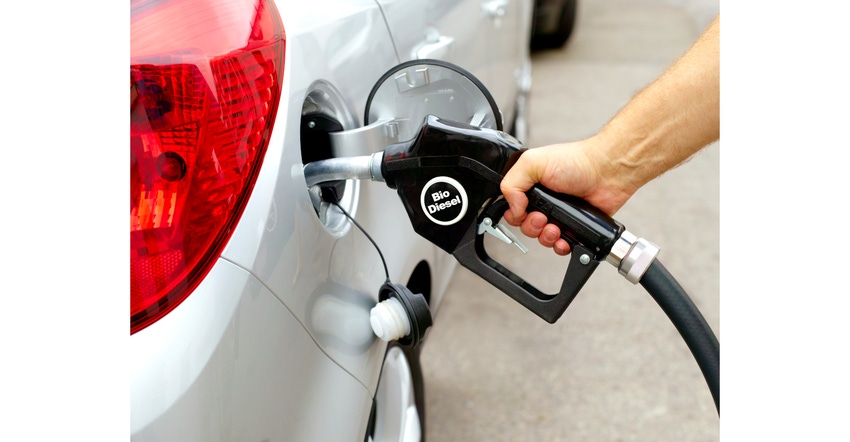If the US isn’t ready to move to biofuels, it could become a slippery slope.

While US and international demands are strong for oil, use of renewable fuels, as well as society’s view on fossil fuels, have made it tough to build more refineries.
US capacity to refine crude oil into fuel and other products fell below 18 million barrels per day (bpd) at the beginning of 2022 with its lowest level since 2014, according to the federal government's annual refinery capacity report released June 21, 2022, and reported by S&P Global.
The US Energy Information Administration projects the nation's operable crude refining capacity dipped to 17.94 million bpd as of Jan. 1, 2022, down from 18.09 million b/d at the beginning of 2021, and from the record high of 18.98 million bpd in 2020 before the pandemic took hold. The 2022 projection was the lowest since 17.92 million bpd in 2014, the EIA said.
Since the COVID-19 pandemic, eight US oil refineries were shuttered.
These are:
Shell Convent, St. James, LA
Marathon, Martinez, CA and Gallup, NM. Capacity: 161,000 bpd (Martinez); 27,000 bpd (Gallup)
Phillips 66, Rodeo, CA and Belle Chasse, LA. Capacity: CA: 120,200 bpd, LA: 255,000 bpd
Hollyfrontier, Cheyenne, WY. Capacity: 52,000 bpd
Calcasieu Refining, Lake Charles, LA. Capacity: 135,500 bpd
Limetree Bay Energy, St. Croix, USVI. Capacity: 210,000 bpd
A ninth, LYONDELLBASELL planned to shut down its refinery in Houston, TX, but has postponed the closure. It expects to now close no later than the end of first quarter 2025. From then, LyondellBasell will focus on a Circular and Low Carbon Solutions business. The refinery is at 263,776 bpd.
California had a few plants close within the last few years. The state’s focus is converting traditional oil refineries into renewable fuel operations.
Phillips 66, Rodeo, CA
In 2020, the company planned to transform the Rodeo Refinery into a facility that converts renewable feedstocks into renewable diesel, renewable components of other transportation fuels, and renewable fuel gas through the use of existing refinery process units. The company expects to be fully operational by Q1 2024.
It also shut its Santa Maria, CA, refinery, which traditionally supplied intermediates to Rodeo for final processing.
Marathon Petroleum, Martinez, CA & Gallup, NM
Marathon stated in August 2020 that it would permanently close its Martinez, CA, and Gallup, NM refineries in response to lower fuels demand, following COVID-19 outbreaks in the US. However, the Martinez plant is now called Martinez Renewables, a joint venture with Neste, and it plans to be capable of producing 730 million gallons per year by the end of 2023. The Gallup plant was permanently closed.
In Louisiana, the Phillips 66 Alliance Refinery, Shell Convent Refinery, and Calcasieu Refining complex have closed since the beginning of 2020 due to reasons including hurricane impacts, the pandemic, and more.
Phillips 66 Alliance, Belle Chasse, LA
The company stated in November 2021 that it would not reopen the Alliance refinery, which was shut in mid-August just before Hurricane Ida. The 50-year-old refinery was severely damaged after a severe flood during the storm.
Shell Convent Refinery, St. James, LA
Shell announced in November 2020 it would be shutting down the refinery after attempts to sell the plant between July and October were unsuccessful. The refinery became unprofitable with the spread of COVID-19. News reports shared that the refinery will open again as a bio-refinery, with a $1.4B investment. The first project is expected to come online in 2025, and the last in 2029.
Calcasieu Refining, Lake Charles, LA
Calcasieu Refining shut its Lake Charles plant in early August of 2020, according to the Louisiana Department on Environmental Quality, citing demand loss during the pandemic and water loss in the area due to Hurricane Laura. It planned its reopening, however, in February 2021. Another natural disaster occurred at the facility, just recently on June 3, 2023. A fire broke out that was caused by a refinery tanker hit by lightning.
HollyFrontier, Cheyenne, WY
In June 2020, HollyFrontier Corp claimed it would convert its Cheyenne refinery into a renewable diesel plant. The company ceased refinery operations at Cheyenne the following month, making it the first US refinery to close in 2020. It reopened as a renewable diesel unit, fully operational in February 2022.
Limetree Bay Energy, St. Croix, USVI
Limetree Bay Energy shut this refinery due to financial problems in May 2021 after operating for just a few months, due to operational setbacks. The refinery had already been idle for a decade before restart. The plant was sold to a Jamaican oil storage facility in December 2021.
While there has been a lot of closures, there have been a couple expansions too.
In March 2023, ExxonMobil announced it invested $2 million in its Beaumont, TX, refinery expansion. It also expanded its Baton Rouge, LA, coking facility with a staggering $410 million investment toward modernization. The three-year project will enable the processing of various crude oils from around the world and is expected to be completed sometime this year. But will it be worth it if the US is moving more toward biofuels?
Renewable Fuels
The move to renewable fuels certainly is not a new idea (think: ethanol). Whether it is renewable diesel or other biofuels, they are here to stay.
The EIA reported that in 2022, there were 11 renewable fuels plants in the US: 4 in California, 1 in Washington, 2 in Wyoming, 1 in North Dakota, 1 in Kansas, and 2 in Louisiana.
Looking at how many have shut down in the last three years, we wondered if the biofuel segment would be ready for the demand.
It turns out that, according to research firm Statista, the US is the largest producer of biofuel in the world, with more than 40% of the world’s production in 2021. Brazil came in second with 21.5%.
For biodiesel alone, there were 72 FAME (Fatty Acid Methyl Ester) plants across the US in 2022, a report by the Department of Agricultural and Consumer Economics, University of Illinois at Urbana-Champaign revealed.
About the Author(s)
You May Also Like




